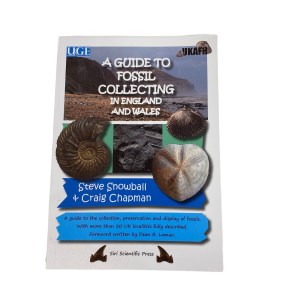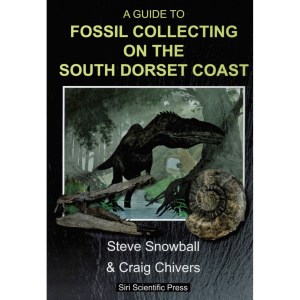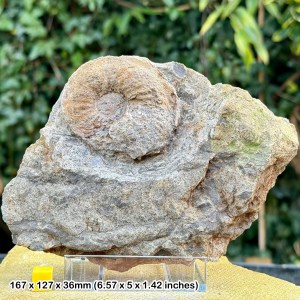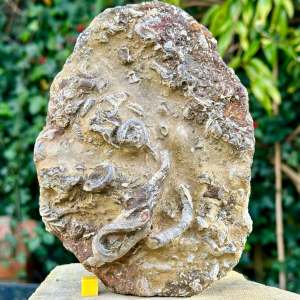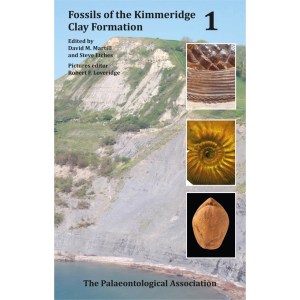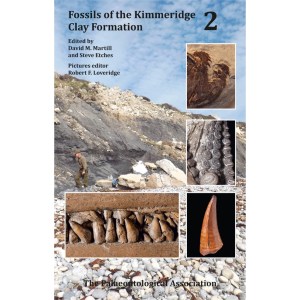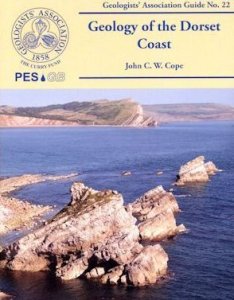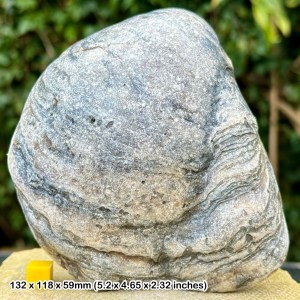The Oxford Clay and the Corallian Beds at Redcliff Point yield ammonites, many species of bivalves and the Oxford Clay exposures can be rich in reptile remains. Giant fossil oyster shells of Gryphaea dilatata are plentiful. The Corallian rocks can be searched for a good variety of trace fossils. This location is best after scouring tides and/or rain but you will need wellington boots or good walking boots, as the terrain is tough going at Redcliff Point.
DIRECTIONS
♦ Parking is available on the roadside near the Waterside Holiday Park, at the end of Bowleaze Coveway, at DT3 6Pp. It’s also a good mid-point if also visiting Bowleaze Cove.
♦ Walk down the slipway and cross the stream, the River Jordan, that flows into the sea and head east.
♦ Ref: 50.637748, -2.4197012
♦ Grid: SY 70416 82090
♦ Nearest Postcode: DT3 6PW
PROFILE INFO
FIND FREQUENCY: ♦♦♦♦ – After storms, rough tides and rain there is a good supply of fossils to be found en route to Redcliff Point.
CHILDREN: ♦♦ – Redcliff Point) is not suitable for young children or the elderly. The terrain is very rocky, with large boulders and seaweed. It can be hazardous.
ACCESS: ♦♦♦♦ – Redcliff Point is easy to access. There is a short walk from the parking area, which is along the roadside near the Waterside Holiday Park.
TYPE: – At Redcliff Point, fossils are generally found in slippages from the cliffs and between boulders and rocks on the foreshore.
FOSSIL HUNTING
This location is part of the Jurassic World Heritage site, so hammering or digging into the cliffs is not permitted. It is an SSSI site.
At Redcliff Point, the sea regularly washes the cliffs, so you have a good chance of finding something at this location and especially on the foreshore, between the numerous rocks and boulders. Gryphaea oysters, numerous types of bivalves and gastropods, ammonites and marine reptile remains are common finds. The rocks are typically hard in the Corallian, so will require a hammer and chisel but extraction of fossils from the soft Oxford clay requires little effort.


GEOLOGY
Redcliff Point lies east of Bowleaze Cove and requires some effort to traverse the rocky terrain along the foreshore. The River Jordan, a small stream which flows into the sea at the end of the cove, is the site of Pleistocene mammal remains, including elephant, hippopotamus and bison, brought down from river gravels.
Here, a fault is crossed, so that the Oxford Clay Formtion is now below sea level and the cliffs are now in the Redcliff Formation of the Corallian Group.The low cliffs expose the upper part of the Nothe Grit Member with the Preston Grit Member above. The latter is well-exposed as fallen blocks along the foreshore and the trace fossil, Thalassinoides, Diplocraterion and Rhizocorallium are present.. Myophorella hudlestoni, Pleuromya and Quenstedtia bivalves are plentiful, and ammonites such as Cardioceras.
Higher above lie the further successions of the Corallian Group, including the Nothe Clay, Bencliff Grit and the appearance of the lower beds of the Osmington Oolite, including the Trigonia Beds. The ribbed shells of Myophorella clavellata, from the latter beds, can often be found on the beach.


At Redcliff Point, a fault brings up the Weymouth Member of the Oxford Clay Formation (Weymouth Member) and huge shells of the oyster, Gryphaea dilatata, are prevalent at low tide, in life position. Eastwards to Ham Cliff, the Furzedown Clay (the lowest part of the Weymouth Member of the Oxford Clay, belongs to the Mariae Zone, with pyritised Quenstedtoceras and Cardioceras ammonites to be found. Beyond Ham Cliff, the Corallian sequence is exposed until you reach Black Head and Osmington Mills (see separate section on this website).

SAFETY
Common sense when collecting at all locations should be used and prior knowledge of tide times is essential. There is a danger of being cut off from the tide at Redcliff Point, since the sea often reaches the base of the cliff.
EQUIPMENT
A pick and/or knife are best at this location. Hammers may be required if looking at the Corallian Beds at Redcliff Point, but most fossils are found in the Oxford Clay at either location. Suitable footwear should be worn, especially after heavy rain. Simple containers and small bags can be taken to transport fossils, which can be cleaned of residual clay at home.
ACCESS RIGHTS
This site is an SSSI and forms part of the UNESCO World Heritage Jurassic Coast. This means you can visit the site, but hammering the bedrock is not permitted. For full information about the reasons for the status of the site and restrictions please download the PDF from Natural England – SSSI Information – South Dorset
It is important to follow our ‘Code of Conduct’ when collecting fossils or visiting any site. Please also read our ‘Terms and Conditions‘
LINKS
♦ Buy Fossils, Crystals, Tools
♦ Location Discussions
♦ Deposits Magazine
♦ Join Fossil Hunts
♦ UK Fossils Network
-
A guide to fossil collecting in England and Wales
£24.20 -
A guide to fossil collecting on the South Dorset Coast
£23.80 -
Distinguished Oxford Clay Ammonite Fossil on Stand – Jurassic, Bowleaze Cove, UK – COA
£24.00 -
Fossil worm tube block, oxford clay, redcliff point, dorset, uk certificated
£36.00 -
Fossils of the Kimmeridge Clay Part 1 (invertebrates, plants and trace fossils)
£32.00 -
Fossils of the Kimmeridge Clay Part 2 (vertebrate)
£24.00 -
Geology of the Dorset Coast (Geologists’ Association Guide No. 22.)
£21.50 -
Giant Gryphaea dilatata Fossil Oyster – Jurassic Oxford Clay, Dorset, UK – COA Included!
£18.00 -
Giant Gryphaea dilatata Fossil Oyster – Jurassic Oxford Clay, Dorset, UK – COA Included!
£18.00






























